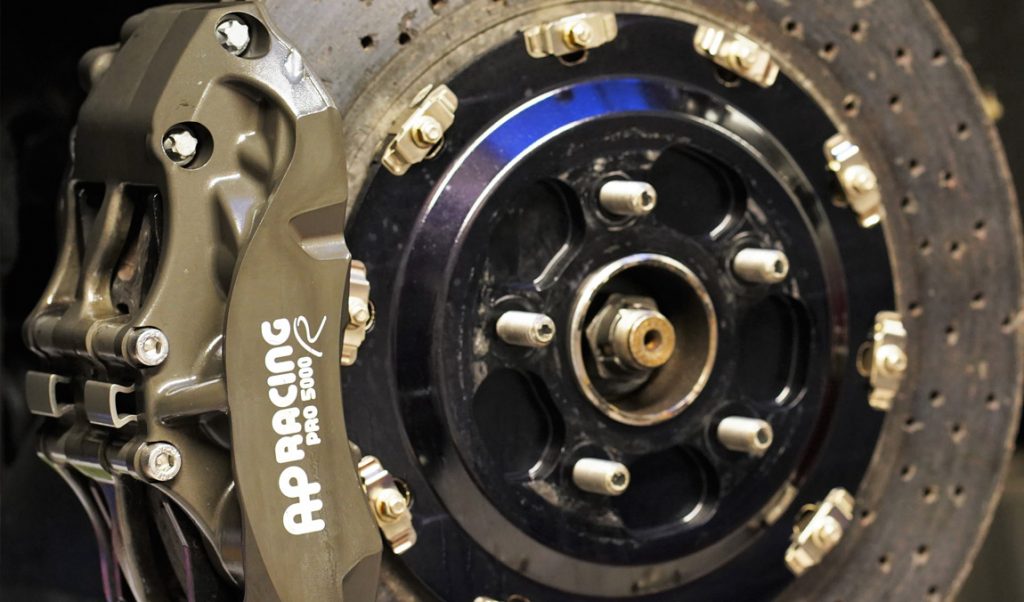Using new brakes aggressive can cause a sudden soft pedal, why is that? The question is often asked when people install new calipers and expect a hard pedal even after heavy use.
The most common reason for a soft brake pedal is simply that the brakes has not been properly bleeded and some air is still in the system.
Because the caliper pistons from new is positioned in their inner position some air will be trapped between pistons and their cylinders behind the seal.
Air will generally always find its way to the top. This could be in a brake line that has a funny bend that goes in an odd upward location or it could be trapped within a high point in a caliper above the brake bleeder. To remove the air in a caliper, it may be necessary to remove the caliper and move it around to try to get the air pocket into a place where bleeding will solve it.
However, air trapped around the pistons sticks to the piston and is difficult to release under normal brake bleeding procedure. When air is heated sometimes up to 300 degC it expands. Under hard braking, the hot air can be compressed and the pedal feels soft. The best way to get reed of the air is to bleed the system with much worn pads or plates so that the pistons are in an out position. Then most of the air gets out. Still it’s recommended to have the system bleeded after heavy use.
TDE recommends a high performance brake fluid like the Pagid RBF330 that has been specially formulated for racing applications, where braking systems consistently operate at very high temperatures. The typical dry boiling point of 330C (626F) is extremely high and guarantees maximum safety against vapor lock. In addition to guarding against vapor lock, Pagid RS RBF330 racing brake fluid maintains its excellent viscosity, lubricity and compressibility performance at extreme temperatures, helping to maintain braking system reliability and performance.
TDE has experienced spongy brakes, even with big brake kits because the OE brake fluid has a too low boiling temperature. Braking in daily driving and on a racetrack is two different things. Continuous use of heavy braking heats up the whole brake system and temperature exceeds the boiling point of the brake fluid, and bobbles in the fluid makes the pedal go soft. So use a racing fluid and change it regularly.
TDE’S MISSION IS TO DEVELOP PERFORMANCE COMPONENTS DESIGNED FOR THOSE WHO WANT TO DRAMATICALLY IMPROVE THE performance OF THE CAR.
Anders Kolstrup is a Diploma Engineer in Automotive Engineering and Aerodynamics. But even before his education he started racing. The first cars wore Minis and very soon, they became very fast. In a period, he had the fastest Mini in the world. Based on a spaceframe and with a 300hp bespoke F2 engine this car was unbeatable on a good day.
During the racing career Anders has driven, most racing classes inclusive Formula Ford but saloons were the preferred choice, modified or standard.
For a period, he ran a company Turbo Technics Denmark together with the former Technical Director of Garrett turbochargers Geoffrey Kershaw. When Anders invented the Rotrex Supercharger, the boosting interest went from turbo to compressor. The Rotrex supercharger, today the smallest and most efficient supercharger in the world is now sold worldwide and Anders is now connected to Rotrex as a consulting engineer.
After a lot of victories Anders is now concentrating on trackdays and at motorsport events he drive the Safety Car with his wife Annette who he met guess where, on a race track.
